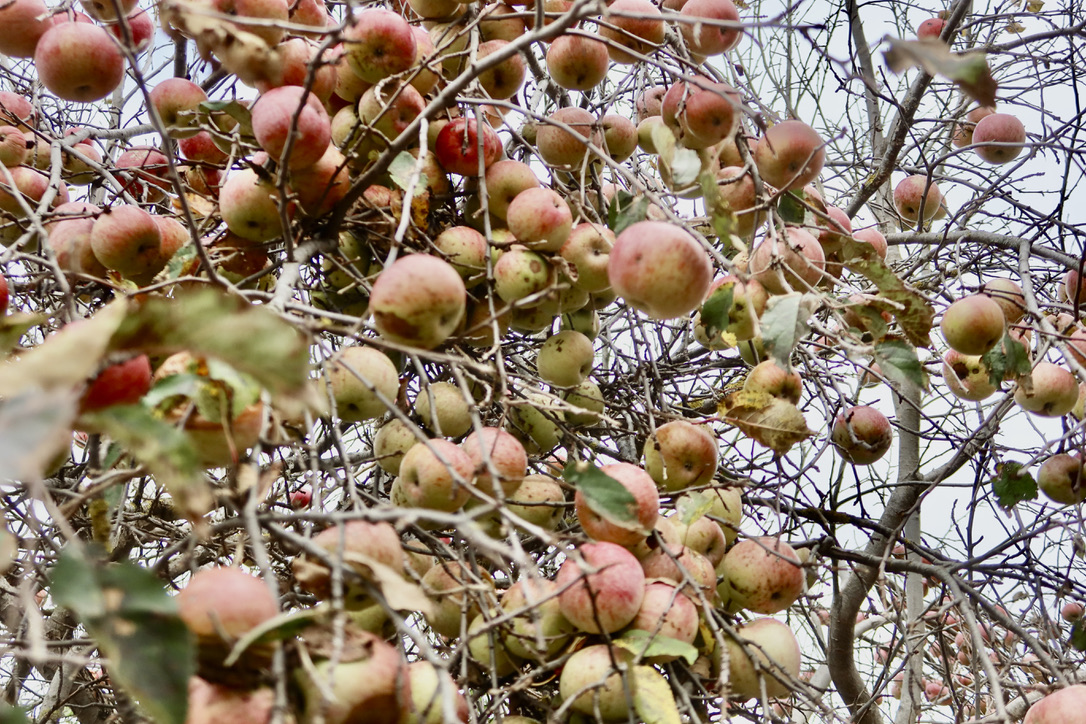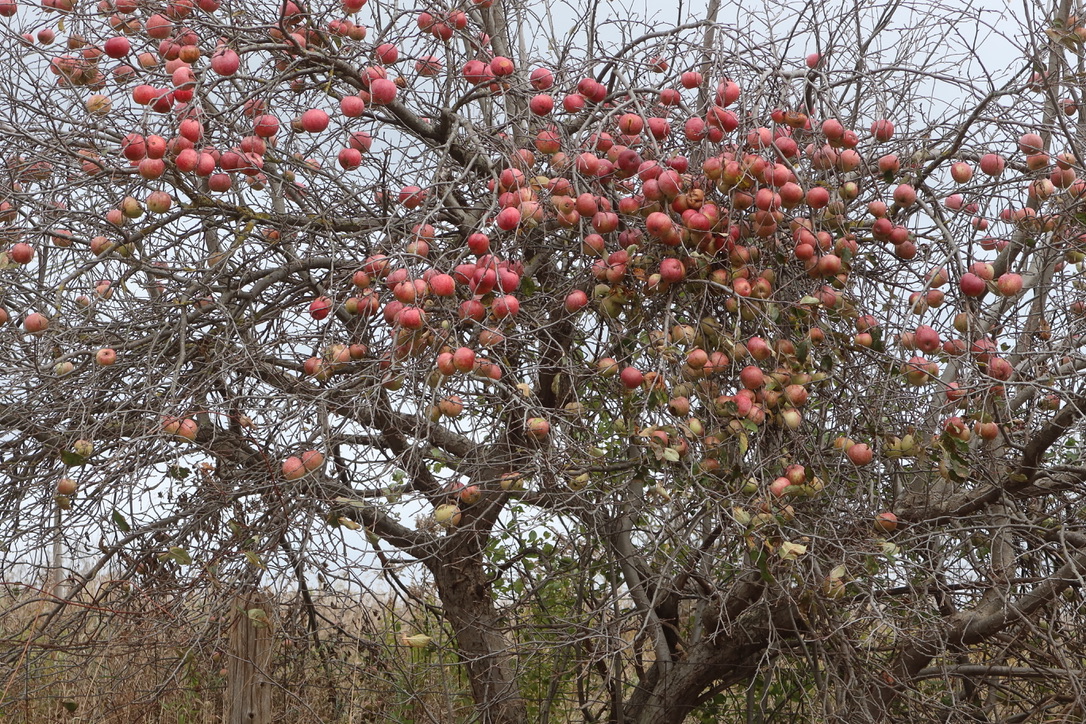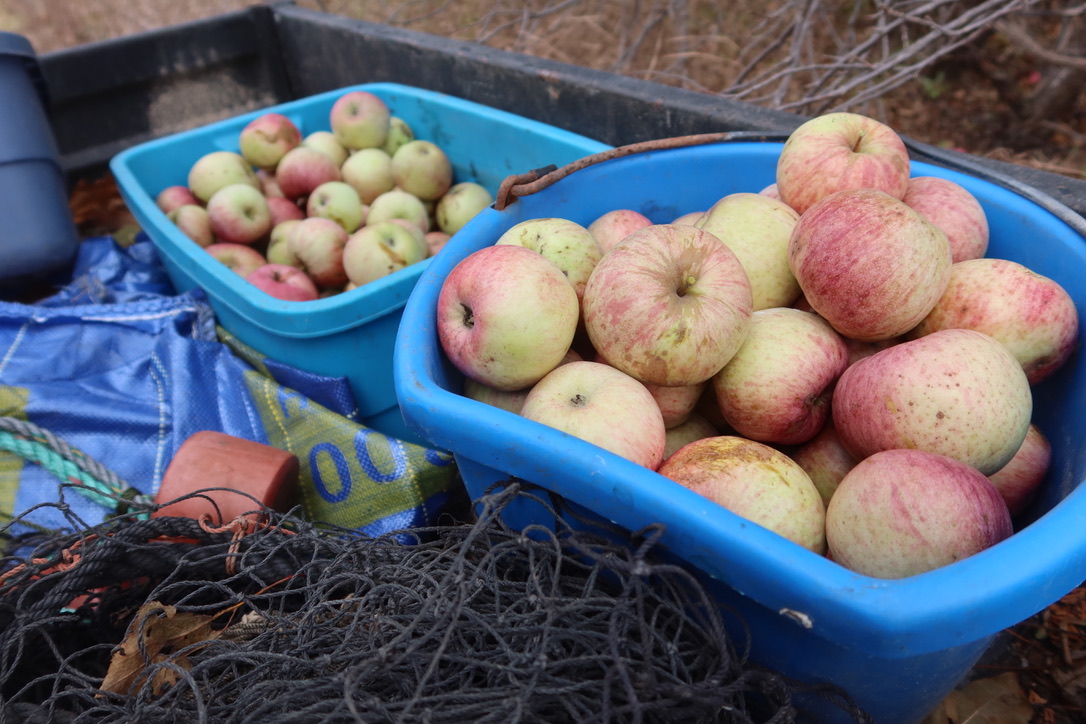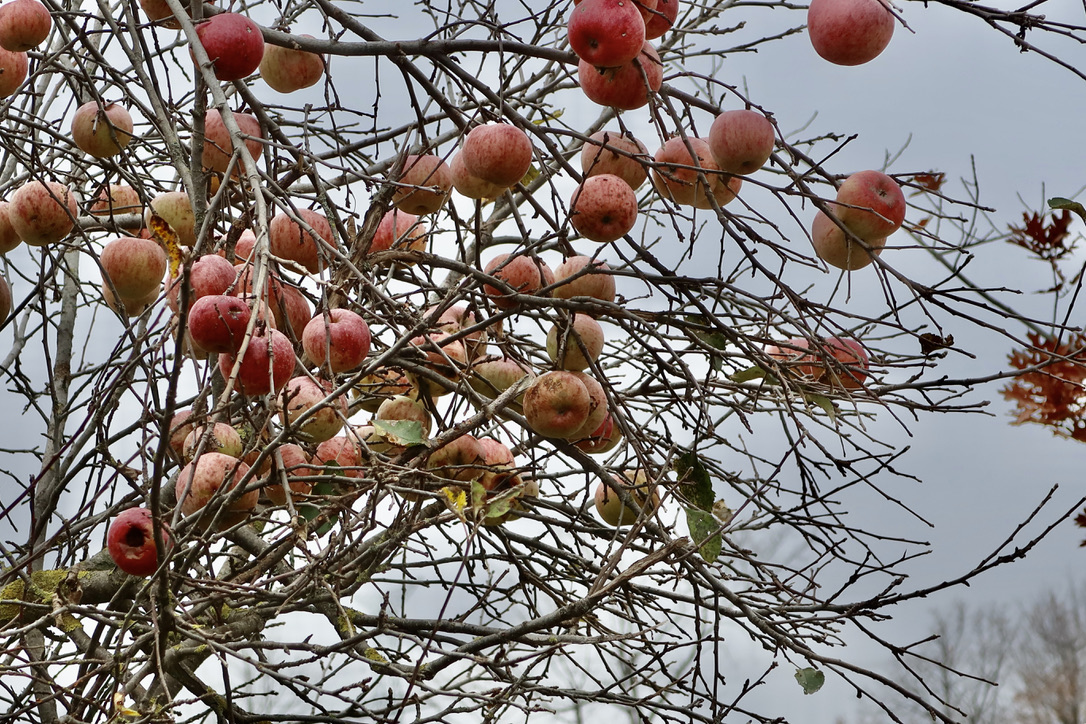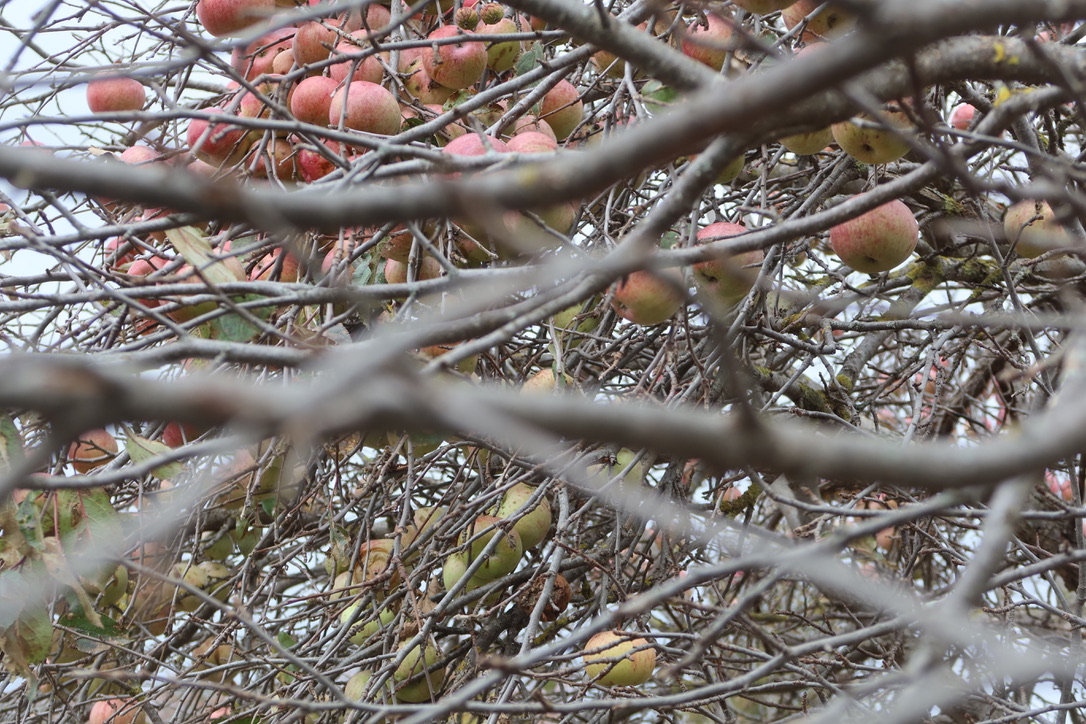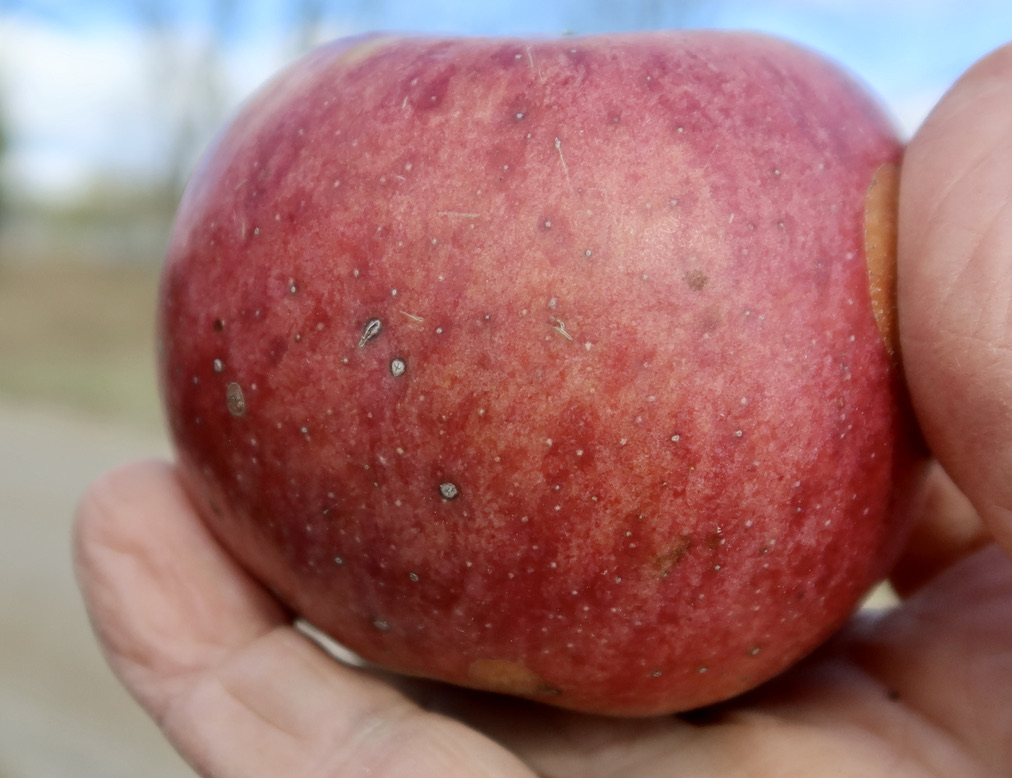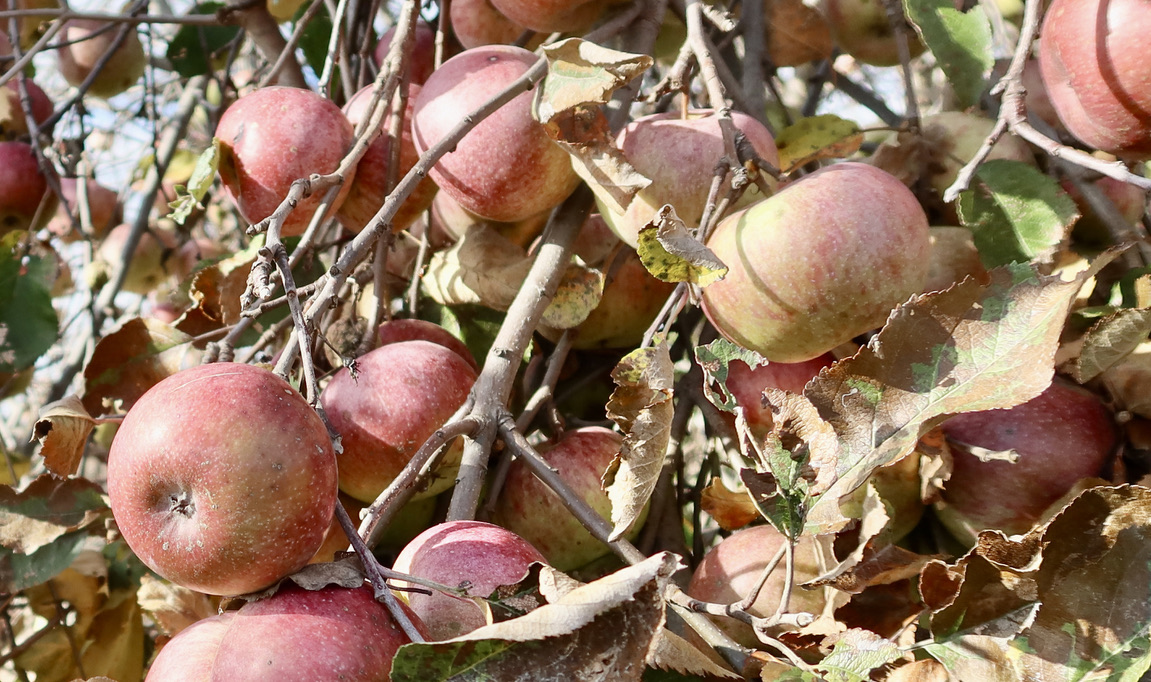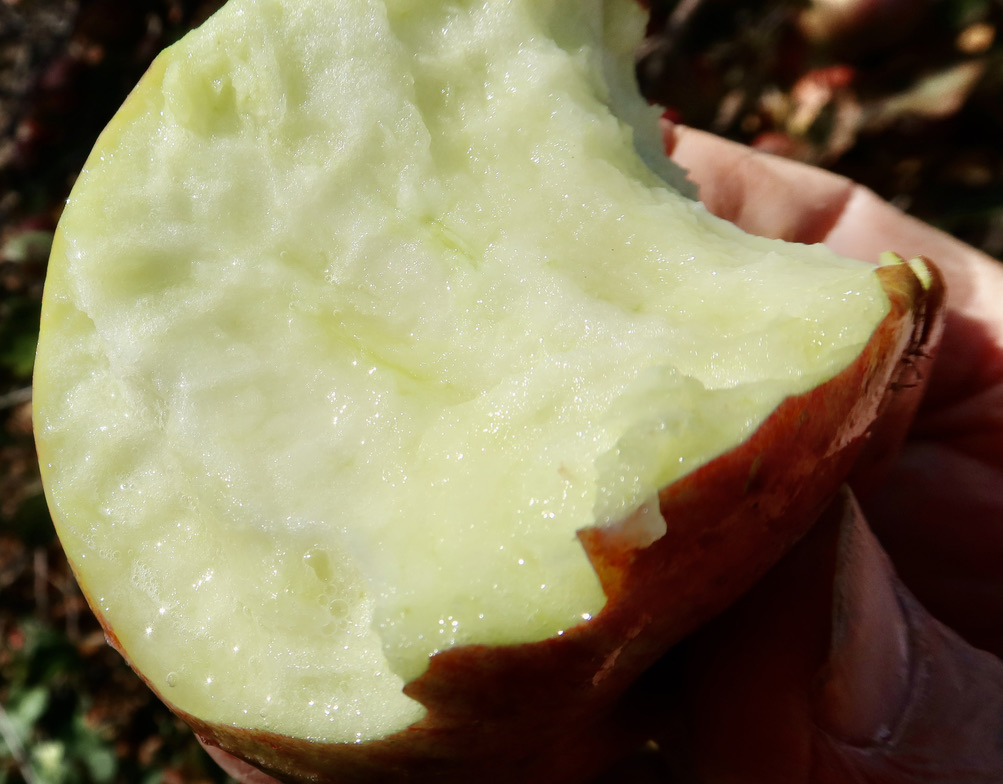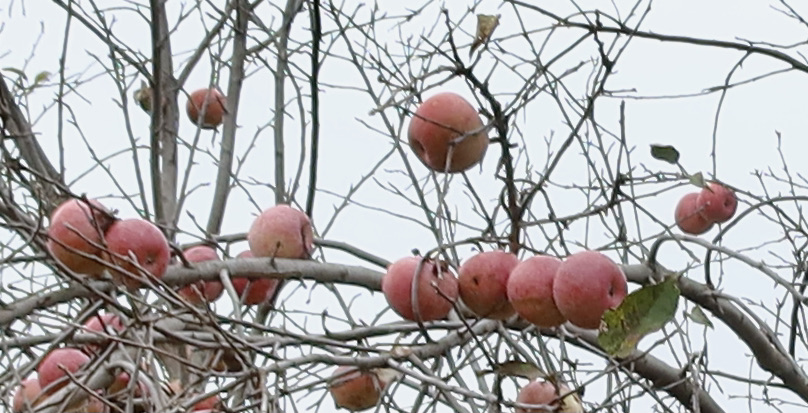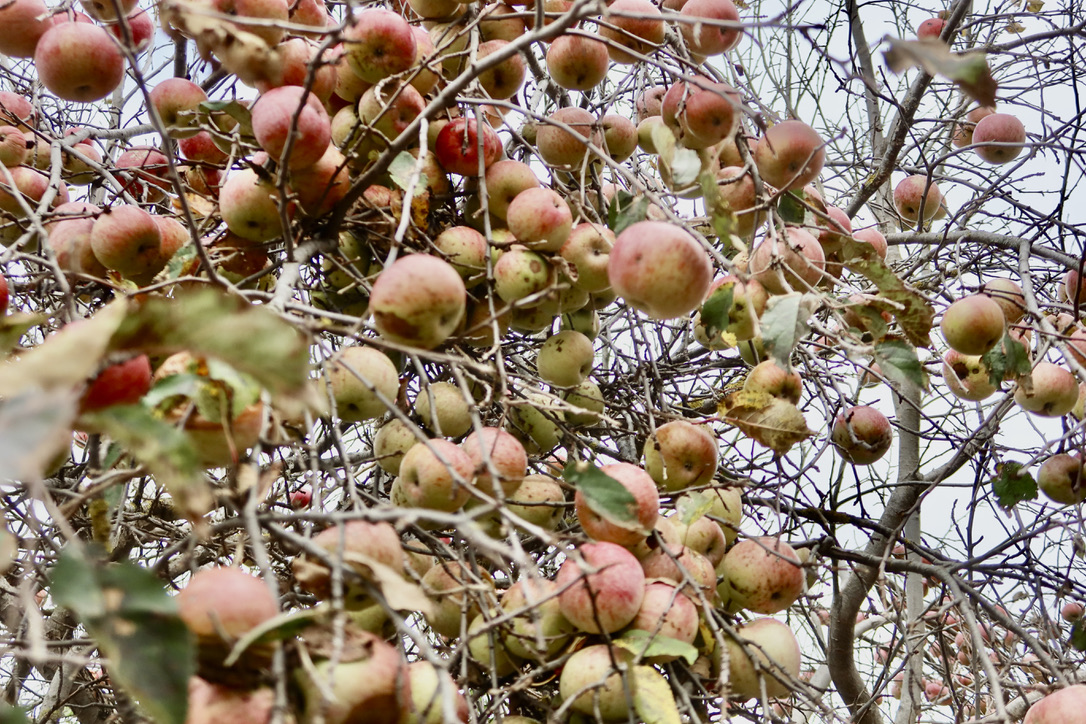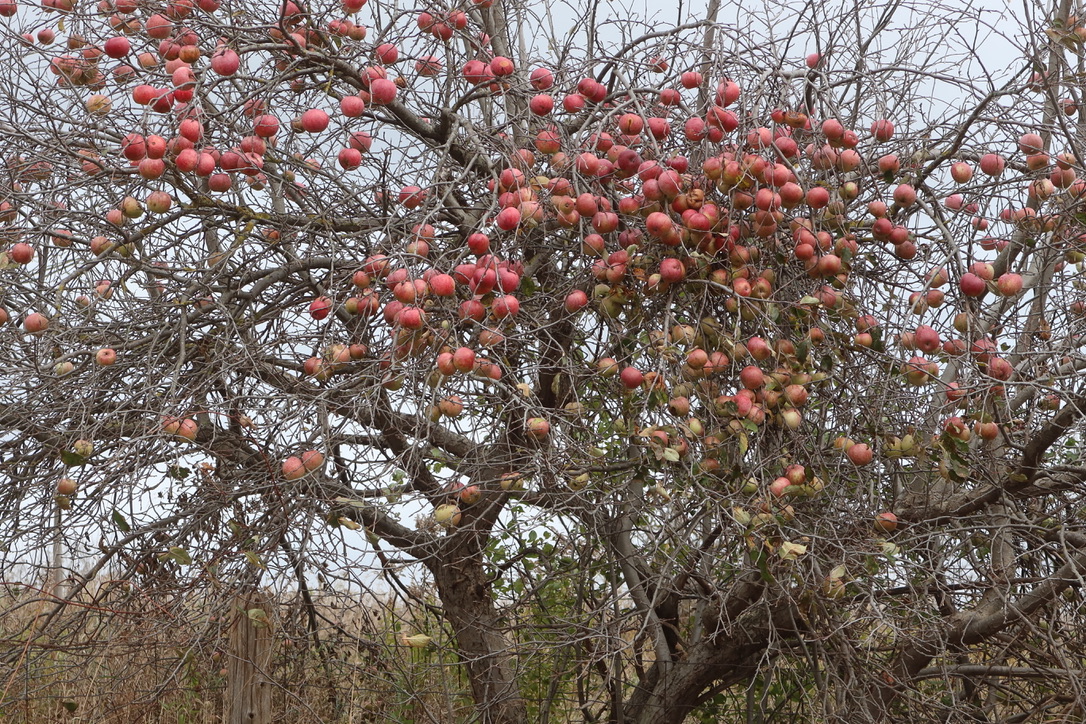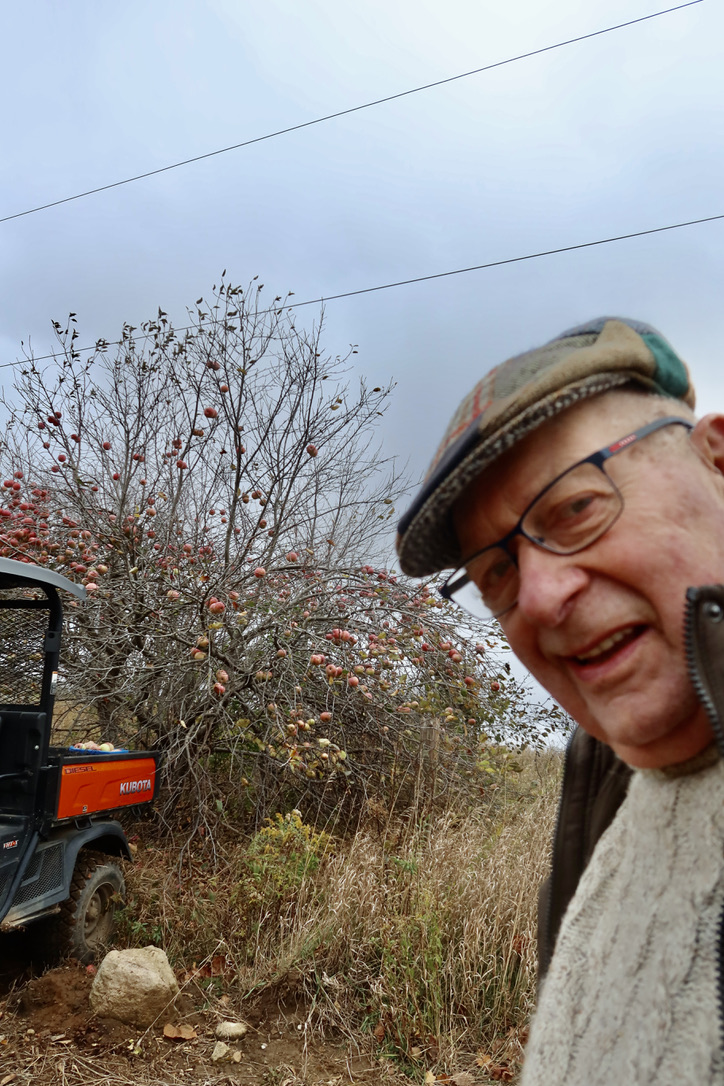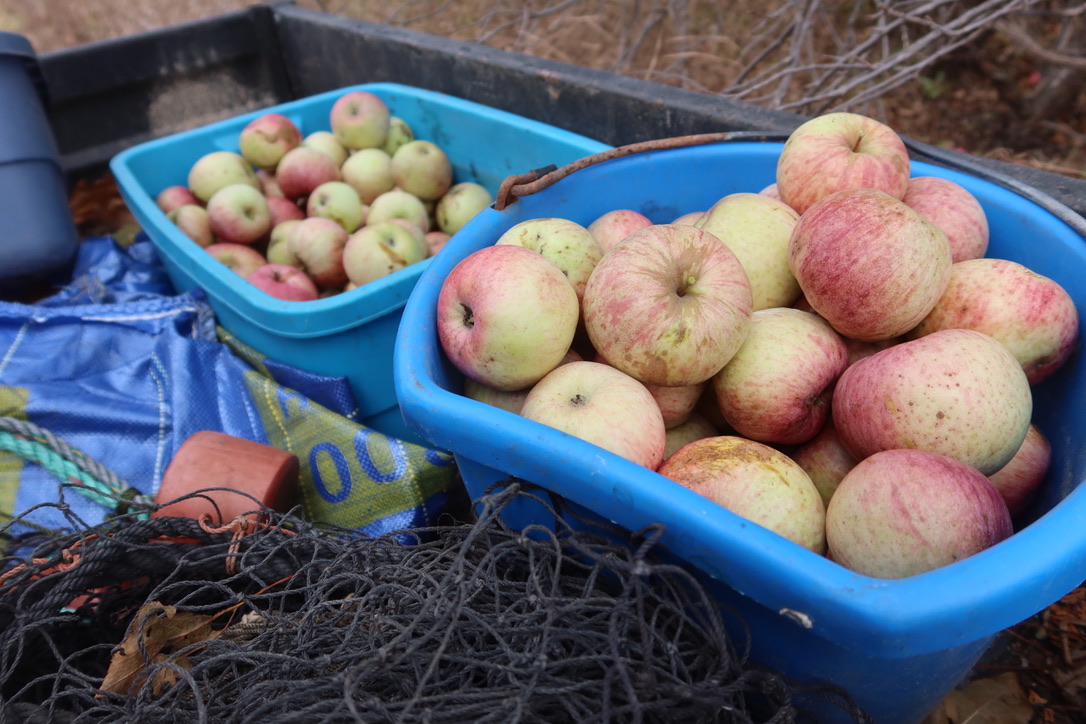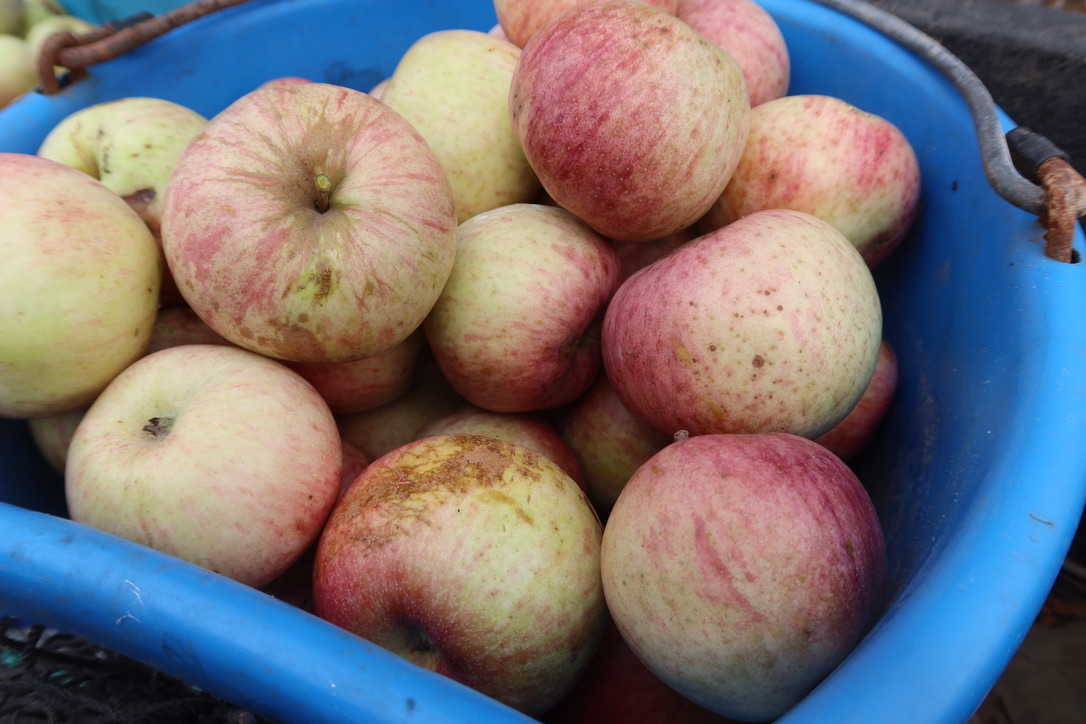EPISODE 908 DISCOVERY OF A FERAL APPLE TREE — APPLES THE SIZE OF GRAPEFRUIT— BUSHELS OF THEM
alan skeoch
Nov. 8, 2023
FERAL APPLE TREE BONANZA
It is a wretched looking tree. branches twisted and contorted as if being punished. It grows in the roadside ditch between
the two Skeoch farms on the Fifth Line of Erin Township. In short the tree would never win a beauty contest. But it
could become famous for its fruit. Bushels and bushels of apples some of which are as big as grapefruit..
But I am getting ahead myself. I have crawled, walked, ridden, skated down this road piece for my whole life and i am 85 errs old
In all that time I never noticed this tree until this cold November day as I Was driving from one farm to the other.
“Holy Samoley, that tree is loaded..big apples. No! big is a poor term. Huge apples.”
“How many?” quizzed Marjorie
“Enough for you to make apple pies all winter.”
“Like spy apples?”
“Almost identical but they taste better.”
“Many on the tree? Are you exaggerating?”
“Here are four pails of the apples …all picked in 15 minutes … I can stand on
the gravel road and pick them with ease.”
“In my 85 years I never noticed this tree. I am older than the tree . Eric and I played
hide and seek among the huge boulders that the McLeans dumped along the fencerow in
years past. Jack in the pulpits attracted our attention but we never noticed this
apple tree growing ….never noticed apples until this year. And the biggest apples are
at the top …all I need is a ladder courage to get them meanwhile you can peel a bunch
and make an apple pie.”
“Will they keep? So many apples turn to mush when they touch each other..”
“These apples grow in clusters….five,six, seven apples in a clump. “
“Most Wild apples are small…these are huge. Are you kidding me?
Did you buy these apples?”
“Come along…you can boost me.”
“It wil take too long.”
“If we walk slowly it will take five minutes…ir we run two minutes. I tell you
without word of a lie you are about to make a discovery that you will never forget.”
“I bet that guy Husband from the University of Guelph would like to take a cutting from ‘our
feral apple tree.”
“What do you mean by the term ‘our’…..this tree grows in the roadside ditch…public…owned by the township.”
“You just explained why I never noticed this tree before now.”
“How?”
“Remember the big storm last spring?
Devastated the trees”
“Think this feral apple tree has been hiding behind other trees….the storm ripped out the cover and
the township forestry people cleaned up….cut all the crap around the feral tree….gave
it the breathing space it was waiting a lifetime to have happen. That’s just a guess.”
“Why did they not cut up the feral tree?”
“Come along…you will see why. The tree is protected by a jungle of twigs and branches…hard to
penetrate with a chain saw. Why bother”
“Why not call Brian Husband….the professor”
“He might not give a damn. No-one cares.”
alan
Postscript: Wonder of wonders…Brian Husband is alive and well and interested
NOTE FROM BRIAN HUSBAND (NOV. 8, 2023
Hello Alan,
Thank you for including me on your latest episode about the orchard. I appreciated the photos and the words. They made me curious about the history of that orchard. Do you have reason to believe those trees were part of an actual orchard of cultivars or might they be seeds that established and persisted because they were protected from cultivation for some reason. I always enjoy those little discoveries and the questions that arise about their origin.
Thanks for your observations and thoughts.
Best,
Brian
Dr. Brian C Husband (he/him) |Professor of Integrative Biology | University of Guelph, Summerlee Science Complex Rm 1477 | 50 Stone Rd E | Guelph, ON | N1G 2W1
“After comparing the genes of 578 naturalized feral trees to those of 156 non-feral varieties, as well as some ornamental species, the researchers discovered feral varieties originate strictly from commercially grown species. The study revealed parents of many feral apple trees comprise nine heritage cultivars — all varieties grown before 1900 — that accounted for 72 per cent of the identified parental lineages in the analysis.
“The origin of feral trees wasn’t so much the commercial apples fertilizing native crabapple, but rather these escaped apples that were now out there and growing wild,” said Husband. “The legacy of these old cultivars, some of which are no longer in production, reside in the mixed genomes of these wild apples.”
Some cider producers have begun mapping and evaluating unique apple strains found growing in abandoned orchards, hedgerows and historical properties, looking for those that are suitable for making hard cider, Husband added.
“There is definitely a growing interest in feral apples. Cider producers are looking for interesting flavours, and feral apples with heritage traits may be just what they are looking for.”
“Marjorie, I took two of these apples to our high school reunion today…seven old timers from Humberside C.I.”
“were the excited?”
“Not much…only Zig Novak who said “this looks like a Northern Spy Apple”
“Cynical?”
“No, I think he was perceptive…asked him to take a bite as I did.”
“His comment?”
“Alan, I am taking this apple for my wife to taste.”
“Seemed to support your great discovery How did the others feel?”
“I think some of them thought I was a bit wacky.”
“True.”

